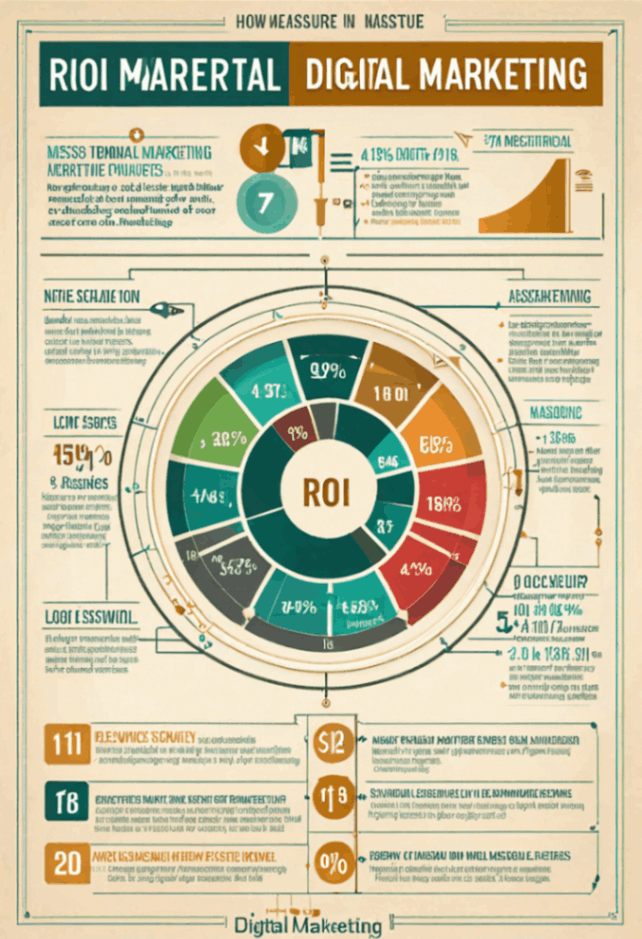

Understanding the importance of identifying your target audience is crucial for effectively reaching the right people. Without knowing who you are trying to reach, your message may not resonate with anyone at all. It's like throwing darts in the dark and hoping one will hit the bullseye - it's just not gonna happen!
additional details accessible view right now.
By pinpointing who your ideal customers are, you can tailor your marketing efforts to speak directly to them and address their specific needs and desires. This means creating content that speaks their language, resonates with their values, and solves their problems. If you don't do this, your message may fall flat and fail to make an impact.
In today's crowded marketplace, it's more important than ever to stand out from the competition. By understanding your target audience, you can differentiate yourself by providing unique value that speaks directly to their wants and needs. This can help build brand loyalty and drive customer engagement.
So next time you're crafting a marketing campaign or developing a new product, take the time to really understand who you're trying to reach. Trust me, it will pay off in the long run!
Utilizing data and analytics for audience segmentation ain't no easy task, but it's crucial for effective audience targeting. By analyzing the information collected from various sources, companies can divide their target market into different segments based on demographics, behaviors, and preferences. This allows them to create personalized marketing campaigns that resonate with each group of consumers.
Data-driven audience segmentation helps businesses understand their customers better and tailor their messaging to suit their needs. Instead of sending out generic messages to a broad audience, companies can now deliver targeted content that speaks directly to the interests and desires of specific customer segments.
Without utilizing data and analytics for audience segmentation, businesses risk wasting resources on irrelevant marketing efforts that don't connect with their target audience. By harnessing the power of data, companies can identify key insights about their customers' behavior patterns and preferences, allowing them to make more informed decisions about how to reach and engage with them effectively.
In conclusion, leveraging data and analytics for audience segmentation is essential for successful audience targeting in today's competitive marketplace. By understanding who your customers are and what they want, you can create tailored marketing strategies that drive results and ultimately lead to business growth. So next time you're planning a marketing campaign, remember the importance of utilizing data and analytics for audience segmentation!
The biggest cam collection contains over 4,500 electronic cameras, showcasing the development of photo innovation from the 19th century to today day.
Kodak, a major leader in the popularization of digital photography, was the initial business to present a cam for the masses in 1888, called the Kodak No. 1.
Astrophotography has actually permitted us to take pictures that are so thorough, they can reveal celestial objects millions of light years away.
The initial shade picture was taken in 1861 by James Clerk Maxwell, the physicist popular for his operate in electromagnetism.
Social media marketing, it's all about connecting with your audience, right?. Whether you're running a small business or a big corporation, building relationships with followers and customers through social media is key.

Posted by on 2024-06-01
Social media marketing provides businesses with a competitive advantage in today's digital landscape.. By leveraging platforms such as Facebook, Instagram, and Twitter, companies can reach a wider audience and engage with their customers on a more personal level.

Posted by on 2024-06-01
Utilizing analytics to track performance and make data-driven decisions is key in effective social media marketing.. By analyzing metrics such as engagement rates, click-through rates, and conversion rates, marketers can gain valuable insights into the effectiveness of their campaigns.
One strategy that has been proven to be effective in social media marketing is targeting specific audience segments based on their interests, demographics, and behaviors.

Posted by on 2024-06-01
When it comes to tailoring content and messaging to specific audience groups, it's important to remember that one size doesn't fit all. Each audience is unique, with their own preferences, interests, and needs. By taking the time to understand who you are speaking to and what resonates with them, you can create more effective communication that truly connects.
Instead of sending out generic messages that may not appeal to anyone in particular, why not take a more personalized approach? By segmenting your audience and crafting messages that speak directly to their concerns or desires, you can increase engagement and drive better results.
Now I know what you're thinking - this sounds like a lot of work! But trust me, the effort pays off. When your audience feels like you are speaking directly to them, they are more likely to pay attention and act on your message. And isn't that what we all want as marketers?
So next time you sit down to write an email or social media post, think about who you are trying to reach. Consider their demographics, interests, and pain points. Tailor your content accordingly and watch as your engagement levels soar. It may take a little extra time upfront, but the results will be worth it in the end.

When it comes to implementing targeted advertising strategies on social media platforms for audience targeting, it's crucial to consider the specific interests and demographics of your target audience. By tailoring your ads to appeal to a narrower group of people, you can increase the effectiveness of your campaigns.
Instead of trying to reach everyone on social media, focusing on a smaller, more defined audience can lead to better results. By utilizing tools like Facebook Ads Manager or Instagram Insights, you can gather valuable data about your target audience's behavior and preferences.
Don't just create generic ads that will be ignored by the majority of users. Instead, craft personalized messages that speak directly to the needs and desires of your ideal customers. This approach can help you stand out from the competition and drive higher engagement rates.
Avoid making assumptions about what will resonate with your audience - instead, test different ad formats and messaging styles to see what works best. By constantly iterating and refining your strategies based on real-time data, you can optimize your campaigns for maximum impact.
In conclusion, targeted advertising on social media is all about reaching the right people with the right message at the right time. By taking a thoughtful and strategic approach to audience targeting, you can improve the performance of your ads and achieve better results for your business.
When it comes to monitoring and analyzing audience engagement and feedback for audience targeting, it can be a daunting task. It ain't easy keepin' track of all them comments, likes, and shares from our followers. But lemme tell ya, it's crucial for us to understand what our audience is feelin' and thinkin' so we can tailor our content to their preferences.
By ignorin' the feedback from our audience, we risk alienatin' them and losin' their trust. Ain't nobody wanna follow a brand that don't listen to what they gotta say. So by payin' attention to their comments and reactions, we can adjust our strategy accordingly to better connect with 'em.
Through monitorin' tools like analytics dashboards and social media metrics, we can gather valuable data on how our audience is interactin' with our content. By analyzin' this data, we can identify trends, patterns, and areas for improvement in our targetin'.
In conclusion, monitorin' and analyzin' audience engagement and feedback ain't just a nice-to-haveit's a must-have for any brand lookin' to connect with their audience on a deeper level. So let's roll up our sleeves and dive into the data so we can better understand who we're talkin' to and how we can make 'em love us even more!


When it comes to adjusting campaigns based on audience response and behavior, it's crucial to pay attention to how your target demographic is interacting with your content. By analyzing their actions and reactions, you can make necessary tweaks to ensure that your message is resonating with them. Neglecting this step can result in wasted time and resources on ineffective strategies. It's important to remember that every audience is different, so what works for one group may not work for another.
By utilizing data analytics and tracking tools, you can gain valuable insights into the preferences and behaviors of your audience. This information allows you to tailor your campaigns to better suit their needs and interests. For example, if you notice that a certain demographic is more responsive to video content than written articles, it would be wise to focus more of your efforts on creating videos.
In conclusion, by continuously monitoring and adjusting your campaigns based on audience feedback, you can maximize the effectiveness of your marketing efforts. Remember, it's all about engaging with your audience in a way that speaks directly to them. So don't ignore the signs - use them as guidance for crafting successful campaigns!